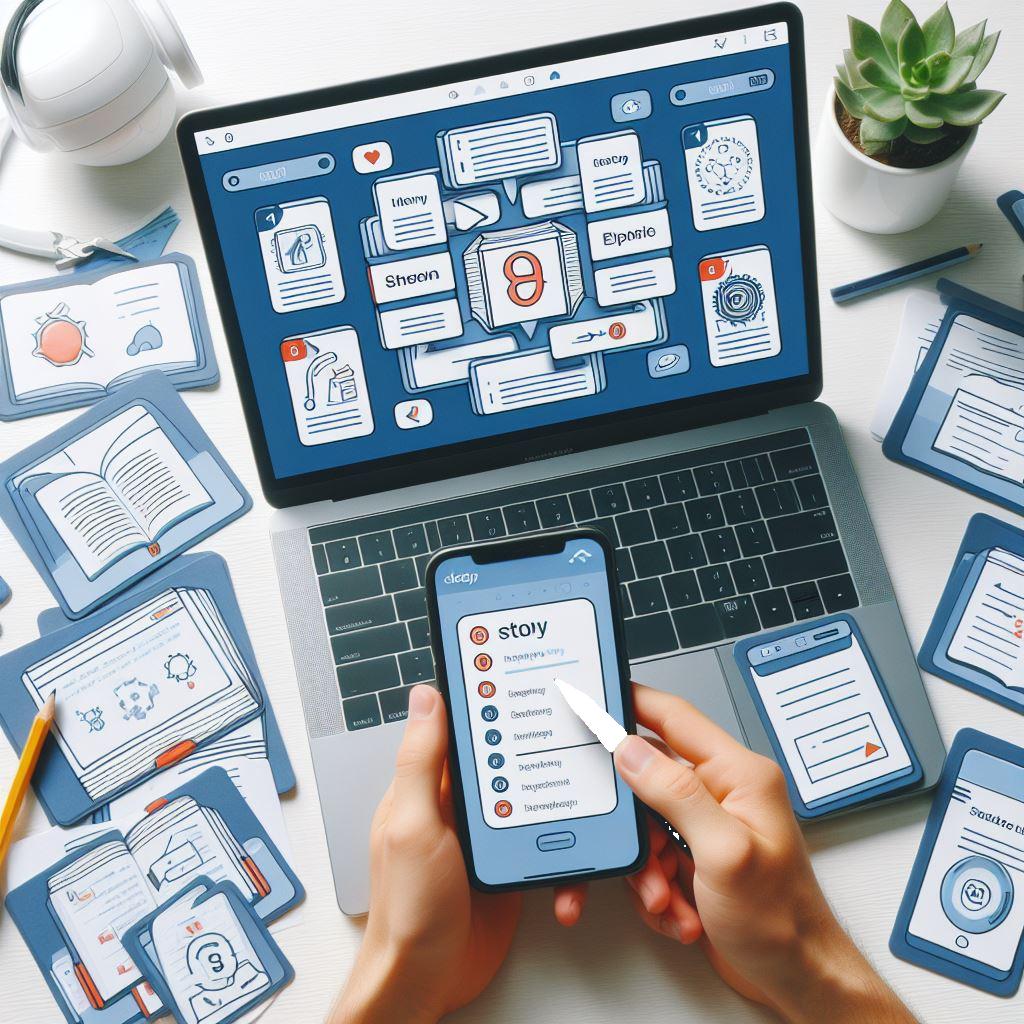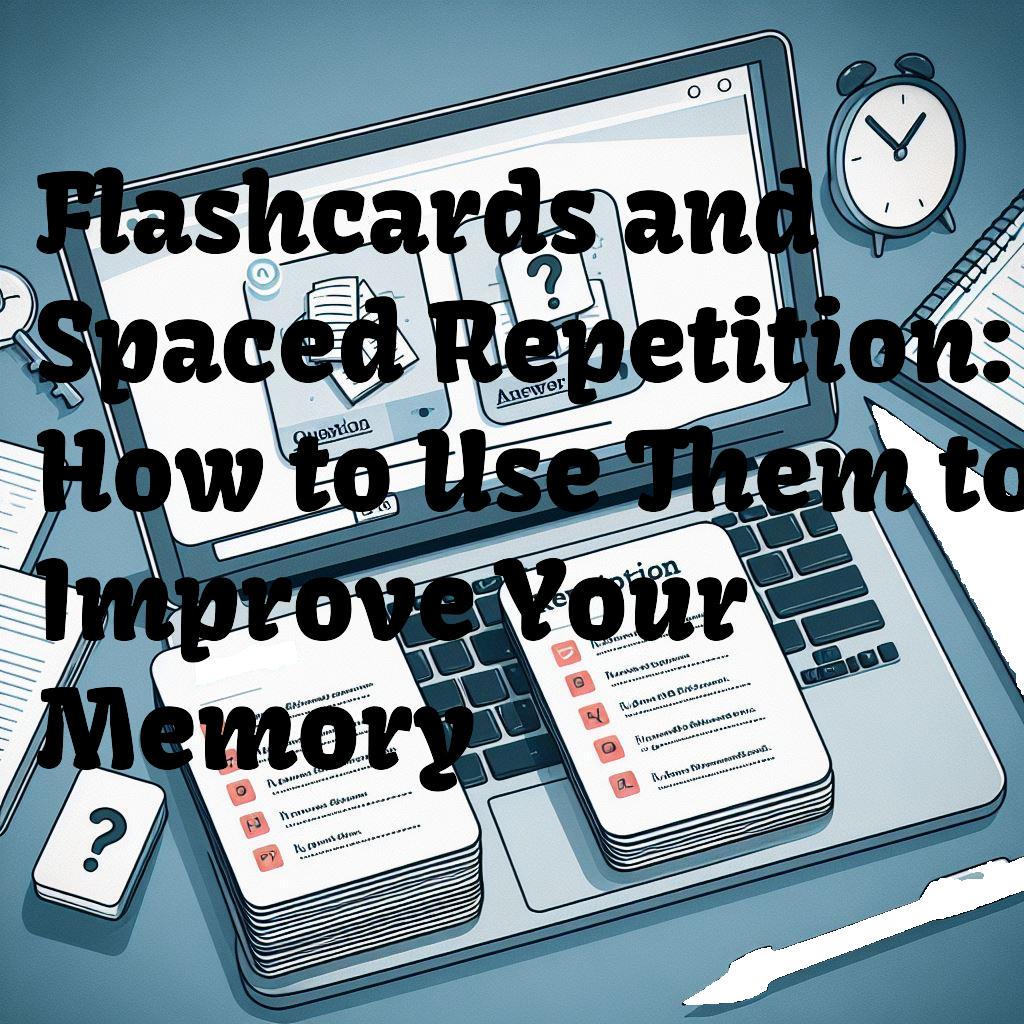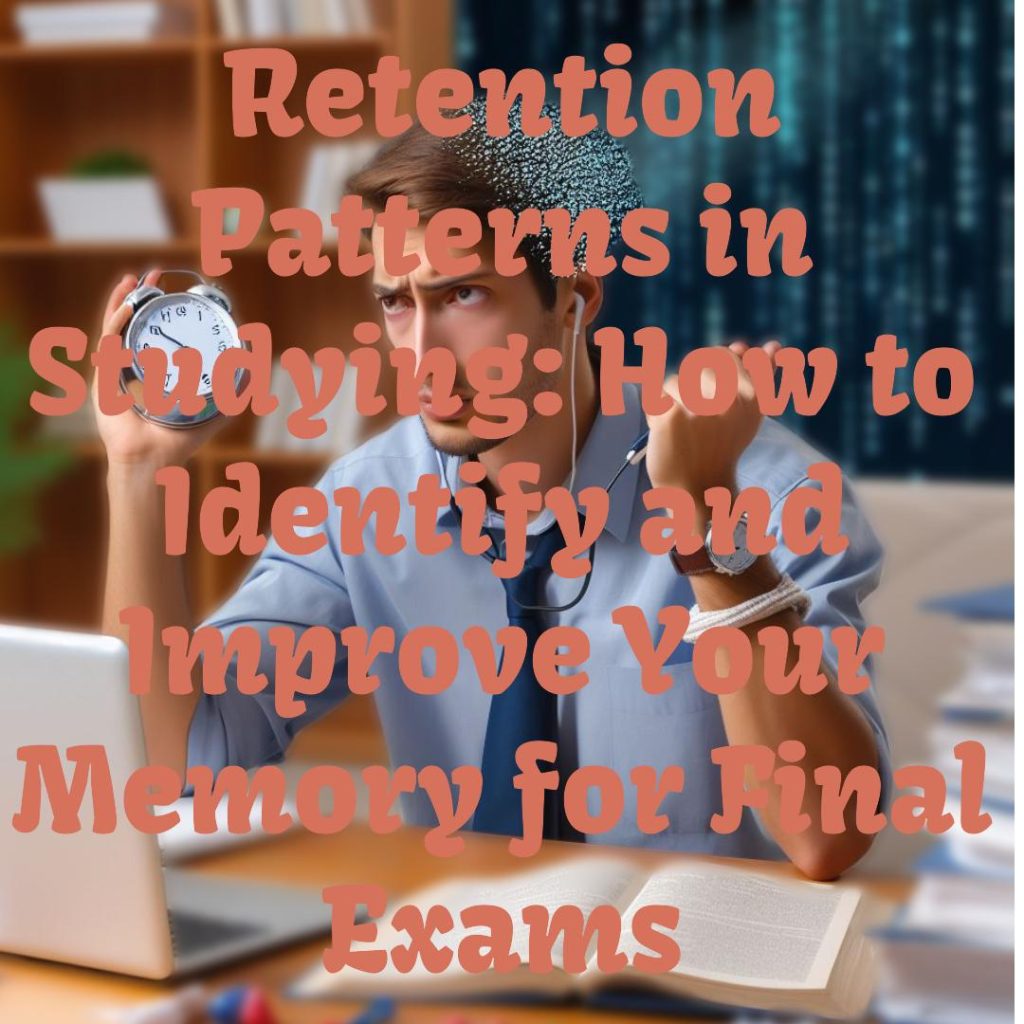One of the most effective and proven methods for improving memory is using flashcards and spaced repetition. Flashcards are cards that have a question on one side and an answer on the other. They are used to test our knowledge and recall of a specific topic or subject. Spaced repetition is a technique that involves reviewing and recalling information at optimal intervals until the information is learned well.
In this article, I’ll explain how flashcards and spaced repetition work, why they are beneficial for memory improvement, and how to use them effectively for your learning goals.
How Flashcards and Spaced Repetition Work

Flashcards and spaced repetition work by taking advantage of two key principles of memory: active recall and the forgetting curve.
Active recall is getting information from memory on your own, without any help or clues. It is a powerful way of strengthening memory and making it more resistant to forgetting. Active recall also helps to consolidate information into long-term memory and integrate it with existing knowledge.
The forgetting curve illustrates the rate of information loss from memory with time. It was first discovered by Hermann Ebbinghaus, a German psychologist who experimented on his own memory. He found that the amount of information that we remember depends on how often and how well we review it. The more we review something, the less likely we are to forget it. The forgetting curve also shows that the best time to review something is just before we are about to forget it. This is when the memory is the weakest and needs the most reinforcement.
Flashcards and spaced repetition are tools that help you build a strong memory system. You actively recall the information on the other side of the card with flashcards, which strengthens and stabilizes your memory. You review the flashcards at the best time with spaced repetition, when the information is most likely to slip from your memory. This extends and improves your memory access. This method enhances your memory and reduces forgetting.
For Example
Suppose you are learning a new language, such as Spanish, and you want to memorize some vocabulary words. You can use flashcards to test yourself on the words and their meanings. For example, you can have a flashcard that has the word “gato” on one side and the meaning “cat” on the other. When you see the word “gato”, you try to recall the meaning “cat” without looking at the other side of the card. This is active recall. When you answer correctly, you remove the card. If you get it wrong, you look at the other side of the card and try to remember it better.
Now, you don’t want to review the same flashcard right away, because you will remember it easily and waste your time. You also don’t want to wait too long, because you will forget it and lose your progress. You want to review the flashcard at the right time, when you are about to forget it. This is spaced repetition. You can use a fixed schedule, such as reviewing the flashcard after 1 day, 3 days, 7 days, 14 days, and so on. On the other hand, you can use a variable schedule, such as reviewing the flashcard based on how well you remember it. For example, if you remember the word “gato” very well, you can review it after a longer interval, such as 10 days. If you remember it poorly, you can review it after a shorter interval, such as 2 days. You can use online tools and apps that have pre-made flashcards and spaced repetition algorithms.
Why Flashcards and Spaced Repetition Are Beneficial for Memory Improvement

Flashcards and spaced repetition are beneficial for memory improvement for several reasons:
– They are simple and easy to use. You only need a set of flashcards and a schedule to follow. You can make your own flashcards or use online tools and apps that have pre-made flashcards and spaced repetition algorithms.
– They are flexible and adaptable. You can use flashcards and spaced repetition for any subject or topic that you want to learn or remember. You can also adjust the difficulty, length, and format of the flashcards to suit your needs and preferences.
– They are efficient and effective. Flashcards and spaced repetition help you learn and remember more information in less time than other methods, such as rote learning and cramming. They also reduce the amount of repetition and review that you need to do, as you only focus on the information that you are most likely to forget.
– They are fun and engaging. Flashcards and spaced repetition make learning more interactive and enjoyable. You can challenge yourself, track your progress, and get feedback on your performance. You can also use gamification elements, such as points, badges, and leaderboards, to motivate yourself and compete with others.
For Example
In a situation where you are a medical student, and you want to learn and remember the anatomy of the human body. You can use flashcards and spaced repetition to test yourself on the names, locations, and functions of the different organs, muscles, bones, and nerves. For example, you can have a flashcard that has an image of the heart on one side and the name and function of the heart on the other. When you see the image of the heart, you try to recall the name and function of the heart without looking at the other side of the card. This is active recall. If you get it right, you move to the next card. If you get it wrong, you look at the other side of the card and try to remember it better.
You can use a fixed schedule, such as reviewing the flashcard after 1 day, 3 days, 7 days, 14 days, and so on. Or you can use a variable schedule, such as reviewing the flashcard based on how well you remember it. For example, if you remember the name and function of the heart very well, you can review it after a longer interval, such as 10 days. If you remember it poorly, you can review it after a shorter interval, such as 2 days.
How to Use Flashcards and Spaced Repetition Effectively for Your Learning Goals

To use flashcards and spaced repetition effectively for your learning goals, you need to follow some best practices and tips:
– Make your own flashcards. Making your own flashcards is better than using someone else’s, as it helps you process and understand the information better. It also allows you to customize the flashcards to your own needs and preferences. You can use paper flashcards or online tools and apps, such as Anki, Quizlet, or Art of Memory.
– Use the right amount and type of information. Don’t put too much or too little information on your flashcards. Too much information can overwhelm you and make it harder to recall. Too little information can make the flashcards too vague and ambiguous. Use the right type of information that matches your learning goal. For example, use definitions, examples, diagrams, formulas, or images, depending on what you want to learn or remember.
– Use the right spacing intervals. Don’t review your flashcards too often or too rarely. Too often can waste your time and make you overconfident. Too rarely can make you forget the information and lose your progress. Use the right spacing intervals that match the forgetting curve and your memory strength. You can use a fixed schedule, such as the one suggested by Dominic O’Brien, or a variable schedule, such as the one used by Anki² or Supermemo.
– Review your flashcards regularly and consistently. Don’t skip or postpone your review sessions. Review your flashcards regularly and consistently, preferably every day or every other day. This will help you maintain and improve your memory and avoid forgetting. Review your flashcards in a quiet and distraction-free environment, and focus on the information and your recall.
– Test yourself and get feedback. Don’t just look at the flashcards and read the information. Test yourself and try to recall the information on the other side of the card. This will activate your active recall and strengthen your memory. Get feedback on your performance and correct your mistakes. This will help you identify your weak areas and improve your accuracy and confidence.
For Example
If you are a history buff who wants to learn and remember the dates and events of the American Civil War, you can use flashcards and spaced repetition to test yourself on the war’s key facts and figures. For example, one flashcard might have “April 12, 1861” on one side and “The Battle of Fort Sumter” on the other. You need to recall the event that occurred on “April 12, 1861” without looking at the other side of the card. This is active recall. If you get it right, you set the card aside. If you get it wrong, you check the other side of the card and try to remember it better.
You want to review the flashcard at the right time, when you are about to forget it. This is spaced repetition. You can use a fixed schedule, such as reviewing the flashcard after 1 day, 3 days, 7 days, 14 days, and so on. Or you can use a variable schedule, such as reviewing the flashcard based on how well you remember it. For example, if you remember the date and event of “April 12, 1861” very well, you can review it after a longer interval, such as 10 days. If you remember it poorly, you can review it after a shorter interval, such as 2 days.



